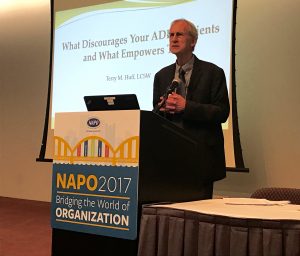Do what you like and like what you do. Adults with ADHD have difficulty sustaining attention and effort when engaged in tasks that are not personally stimulating, or when working in a distracting environment. One of the best non-medical treatments for adult ADHD is finding the best match for a career. The wrong work environment can contribute to disabling symptoms.
Parents of college students with ADHD might be wise not to discourage unorthodox choices for academic majors, or even postponing college. One of my colleagues listened to experts who encouraged her to get a serious agent for her daughter, a gifted actor with ADHD. The daughter became a television star at age nineteen. She lives and works in Burbank, CA and could easily have been a bored college student, possibly underachieving, had she been forced to take a more “practical” path.
As a teenager, I escaped my father’s grocery store, where I had been sentenced to stocking shelves and bagging groceries. My dad just wanted me to work, no matter where, and allowed me to find jobs that provided more varied tasks. The best was working in a hardware store where I learned some useful skills. As a young adult I had a few part-time jobs in radio, getting paid to play music and read news for pay. Long before knowing I had an attention disorder, I recall often thinking that the worst thing someone could do to me is force me into a boring life.
In the early years after college, I experienced both boring and stimulating jobs. Some were about as interesting and challenging as watching the grass grow. Others were not the most stimulating jobs, but they provided opportunities to travel and expand my horizons. The best has been my career as a psychotherapist, allowing me to be useful, to have a relationship with many interesting people, and to meet with clients in a quiet environment with no distractions.
What is your ideal career? What have been the least and most stimulating jobs in your life?
 APO for allowing me to present my ideas about communication that can discourage ADHD clients and alternative communication that can empower them. I’m grateful also to members of the addnashville support group whose suggestions were incorporated into the presentation. We are helping many other adults with ADHD indirectly with the information shared with the organizers. I continue to be impressed with this profession, especially with the acceptance and sensitivity shown to persons with ADHD. Thank you NAPO organizers and members!
APO for allowing me to present my ideas about communication that can discourage ADHD clients and alternative communication that can empower them. I’m grateful also to members of the addnashville support group whose suggestions were incorporated into the presentation. We are helping many other adults with ADHD indirectly with the information shared with the organizers. I continue to be impressed with this profession, especially with the acceptance and sensitivity shown to persons with ADHD. Thank you NAPO organizers and members!